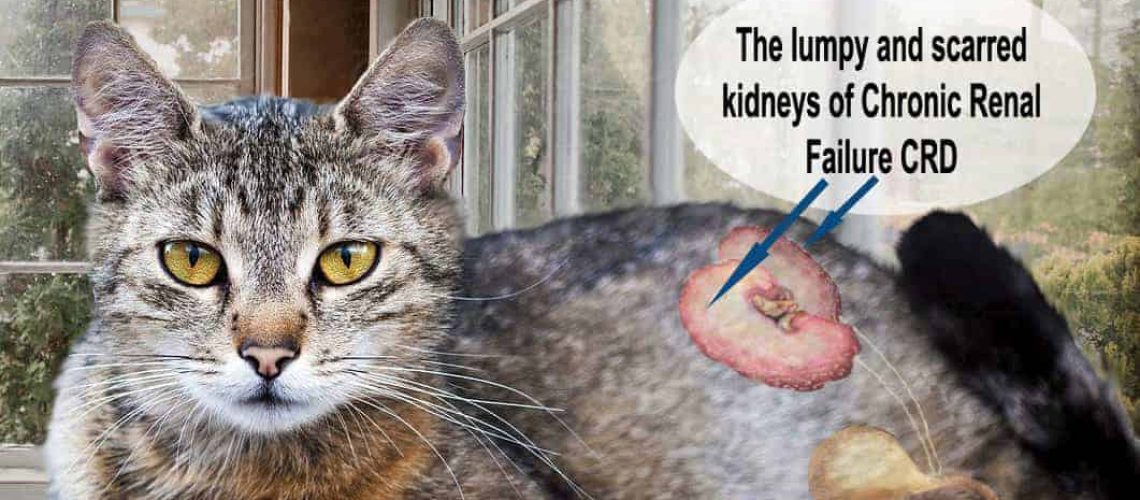Are you curious about the mysterious struggles that our feline friends may face? Imagine a world where cats could talk, where they could share their silent battles and seek our understanding. One such struggle that often goes unnoticed is renal amyloidosis, a condition that affects the kidneys of cats. Understanding this topic not only sheds light on the hidden challenges our beloved pets face, but also empowers us to provide them with better care and support. Join me as we delve into the realm of renal amyloidosis, uncovering its secrets and discovering how we can make a difference in our furry companions' lives. Let's embark on this journey together, exploring the depths of this silent struggle and unveiling the path towards a brighter future for our feline friends.
Key Takeaways:
- Renal amyloidosis is a condition that affects cats and can lead to kidney damage.
- It is a silent struggle because cats often do not show any obvious symptoms until the disease has progressed.
- Early detection through regular check-ups and screenings is crucial for managing renal amyloidosis in cats.
- Treatment options for renal amyloidosis in cats include medication, diet changes, and supportive care to maintain kidney function.
- Owners should be aware of the signs of renal amyloidosis in cats, such as increased thirst, decreased appetite, weight loss, and changes in urination habits.
What is Renal Amyloidosis and How Does it Affect Cats?
Renal amyloidosis is a condition that affects the kidneys in cats. It occurs when abnormal proteins called amyloids build up in the kidneys, causing damage to the organ. These amyloids can accumulate over time and interfere with the normal functioning of the kidneys.
When cats have renal amyloidosis, their kidneys may not be able to filter waste products from the blood properly. This can lead to a buildup of toxins in the body, which can cause symptoms such as increased thirst and urination, weight loss, poor appetite, and lethargy. Over time, renal amyloidosis can progress and result in kidney failure.
How Does Renal Amyloidosis Develop in Cats?
The development of renal amyloidosis in cats is often associated with other underlying diseases or conditions. For example, certain inflammatory conditions or chronic infections can trigger the production of these abnormal proteins. Additionally, genetic factors may also play a role in predisposing some cats to develop renal amyloidosis.
Once these abnormal proteins are produced, they start accumulating in the kidneys and interfere with their normal structure and function. As more amyloids build up over time, they cause progressive damage to the kidneys and impair their ability to perform essential functions.
List of Conditions Associated with Renal Amyloidosis:
- Inflammatory bowel disease
- Feline infectious peritonitis (FIP)
- Liver disease
- Lung cancer
- Lymphoma
Diagnosing Renal Amyloidosis in Cats: What Veterinarians Look for
Understanding the Diagnostic Process
When diagnosing renal amyloidosis in cats, veterinarians rely on a combination of physical examinations, blood tests, and imaging techniques. Firstly, they will carefully examine the cat's medical history and conduct a thorough physical examination to assess any noticeable symptoms or abnormalities. Blood tests are then performed to evaluate kidney function and identify potential underlying causes. These tests may include a complete blood count (CBC), serum biochemistry profile, and urinalysis.
Imaging Techniques for Diagnosis
In addition to blood tests, veterinarians may utilize imaging techniques such as ultrasound or radiography to further evaluate the kidneys. Ultrasound can provide detailed images of the kidneys' structure and help identify any abnormalities or changes in size. Radiography, also known as X-rays, can reveal the presence of calcification or mineralization within the kidneys.
Biopsy: The Definitive Diagnostic Tool
While physical examinations and imaging techniques can provide valuable information, a kidney biopsy is often necessary to confirm a diagnosis of renal amyloidosis definitively. During this procedure, a small sample of kidney tissue is obtained and examined under a microscope to detect the presence of amyloid deposits. This biopsy allows veterinarians to differentiate renal amyloidosis from other kidney diseases with similar symptoms.
Overall, diagnosing renal amyloidosis in cats requires a comprehensive approach that involves analyzing medical history, conducting physical examinations, performing blood tests, utilizing imaging techniques like ultrasound or radiography, and ultimately confirming the diagnosis through a kidney biopsy.
The Silent Struggle: Understanding Renal Amyloidosis in Cats
Renal amyloidosis is a progressive kidney disease that commonly affects older cats but can occur at any age. It occurs when abnormal proteins called amyloids accumulate in the kidneys, leading to organ damage and dysfunction. These amyloid deposits disrupt the normal functioning of the kidneys, impairing their ability to filter waste products from the blood effectively.
Causes and Risk Factors
The exact cause of renal amyloidosis in cats is still unknown. However, certain breeds, such as Abyssinians and Siamese cats, are believed to be more predisposed to developing this condition. Additionally, chronic inflammation or infections in other parts of the body can contribute to the development of amyloid deposits in the kidneys.
Progression and Complications
Renal amyloidosis typically progresses slowly over time, often remaining undetected until significant kidney damage has occurred. As the disease advances, cats may experience symptoms such as increased thirst and urination, weight loss, decreased appetite, and lethargy. If left untreated, renal amyloidosis can lead to severe complications such as kidney failure and ultimately prove fatal.
Early Detection: The Key to Managing Renal Amyloidosis
Early detection plays a crucial role in managing renal amyloidosis in cats. Regular veterinary check-ups, especially for older cats or those at higher risk due to breed or medical history, can help identify potential signs of kidney disease early on. By detecting renal amyloidosis at its initial stages, veterinarians can implement appropriate treatment strategies to slow down disease progression and improve the cat's quality of life.
Understanding renal amyloidosis is essential for cat owners as it enables them to recognize potential symptoms early on and seek prompt veterinary care. With early detection and proper management, cats with renal amyloidosis can lead fulfilling lives despite this silent struggle within their kidneys.
Signs and Symptoms of Renal Amyloidosis in Cats to Watch Out For
Renal amyloidosis is a condition that affects the kidneys of cats. It occurs when abnormal proteins called amyloids build up in the kidneys, leading to damage and dysfunction. Recognizing the signs and symptoms of renal amyloidosis is crucial for early detection and treatment.
Common Signs and Symptoms
Some common signs and symptoms of renal amyloidosis in cats include increased thirst and urination, weight loss, decreased appetite, vomiting, diarrhea, lethargy, and poor coat condition. Cats with this condition may also show signs of pain or discomfort while urinating or may have blood in their urine. It's important to note that these symptoms can be seen in other kidney diseases as well, so it's essential to consult a veterinarian for an accurate diagnosis.
Diagnosing Renal Amyloidosis
To diagnose renal amyloidosis in cats, veterinarians typically perform a thorough physical examination, review the cat's medical history, and conduct various tests. These tests may include blood work to assess kidney function, urine analysis to check for abnormalities or proteinuria (excessive protein in the urine), imaging studies such as ultrasound or X-rays to evaluate the size and structure of the kidneys, and sometimes a kidney biopsy to confirm the presence of amyloids.
Treatment Options for Renal Amyloidosis
While there is no cure for renal amyloidosis in cats, treatment aims to manage symptoms, slow down disease progression, and improve quality of life. Depending on the severity of the condition and individual cat's needs, treatment options may include:
1. Medications: Veterinarians may prescribe medications such as angiotensin-converting enzyme (ACE) inhibitors or diuretics to help control blood pressure or manage fluid balance.
2. Prescription Diet: Specialized renal diets that are low in protein and phosphorus can help reduce the workload on the kidneys and minimize further damage.
3. Fluid Therapy: Intravenous or subcutaneous fluids may be administered to maintain hydration and support kidney function.
4. Supportive Care: Additional supportive care measures, such as managing pain, treating infections promptly, and addressing any underlying conditions, may be necessary to improve the cat's overall well-being.
It's important for cat owners to work closely with their veterinarian to develop an individualized treatment plan based on their cat's specific needs and response to therapy.
Preventing Renal Amyloidosis in Cats: Is it Possible?
Unfortunately, there is no known way to prevent renal amyloidosis in cats. The condition is often considered secondary to other diseases or conditions that cause chronic inflammation or abnormal protein production. However, maintaining good overall health through regular veterinary check-ups, a balanced diet, proper hydration, and prompt treatment of any underlying illnesses can help reduce the risk of developing complications associated with renal amyloidosis.
Potential Long-Term Effects and Complications of Renal Amyloidosis in Cats
If left untreated or poorly managed, renal amyloidosis can lead to severe kidney damage and eventually kidney failure in cats. This can result in a range of long-term effects and complications, including:
1. Chronic Kidney Disease (CKD): CKD occurs when the kidneys lose their ability to function properly over time. It can lead to a variety of symptoms such as increased thirst and urination, weight loss, poor appetite, vomiting, lethargy, and electrolyte imbalances.
2. Hypertension (High Blood Pressure): Renal amyloidosis can contribute to high blood pressure in cats. Hypertension can further damage the kidneys and affect other organs like the heart and eyes.
3. Anemia: Kidney dysfunction can lead to a decrease in red blood cell production, resulting in anemia. Anemic cats may appear weak, tired, and have pale gums.
4. Urinary Tract Infections (UTIs): Cats with renal amyloidosis are more prone to developing urinary tract infections due to compromised kidney function. UTIs can cause discomfort, frequent urination, and potentially spread to the kidneys if left untreated.
Early diagnosis, appropriate treatment, and ongoing management are essential for minimizing the long-term effects of renal amyloidosis in cats and improving their overall quality of life. Regular veterinary care and close monitoring can help detect any changes or complications early on, allowing for timely intervention.
Treatment Options for Cats with Renal Amyloidosis
Medication
One of the main treatment options for cats with renal amyloidosis is medication. Veterinarians may prescribe medications such as angiotensin-converting enzyme (ACE) inhibitors to help manage blood pressure and reduce protein loss in the urine. These medications can help slow down the progression of the disease and improve the cat's overall quality of life.
Dietary Changes
In addition to medication, dietary changes can also play a crucial role in managing renal amyloidosis in cats. A specialized diet that is low in protein and phosphorus can help reduce the workload on the kidneys and minimize further damage. It is important to consult with a veterinarian to determine the most suitable diet for your cat's specific needs.
Fluid Therapy
Fluid therapy is another treatment option that can be beneficial for cats with renal amyloidosis. Intravenous fluids may be administered to help maintain hydration and support kidney function. This can help flush out toxins from the body and improve overall kidney health.
Preventing Renal Amyloidosis in Cats: Is it Possible?
Genetic Testing
While it may not be possible to completely prevent renal amyloidosis in cats, genetic testing can help identify if a cat carries genes associated with this condition. Breeders can use this information to make informed decisions when breeding, reducing the risk of passing on these genes to future generations.
Regular Veterinary Check-ups
Regular veterinary check-ups are essential for early detection and intervention of any potential health issues, including renal amyloidosis. Routine blood tests and urine analysis can help identify any abnormalities in kidney function, allowing prompt treatment before the condition worsens.
Potential Long-Term Effects and Complications of Renal Amyloidosis in Cats
Chronic Kidney Disease
One of the potential long-term effects of renal amyloidosis in cats is the development of chronic kidney disease. As the disease progresses, it can lead to irreversible damage to the kidneys, affecting their ability to filter waste products from the blood. This can result in a range of symptoms such as increased thirst, frequent urination, weight loss, and poor appetite.
Secondary Infections
Cats with renal amyloidosis may also be more susceptible to secondary infections. The compromised immune system due to kidney dysfunction can make them more prone to bacterial or urinary tract infections. Prompt veterinary care and appropriate treatment are necessary to manage these infections and prevent further complications.
Heart Problems
In some cases, renal amyloidosis can also affect the heart function in cats. The accumulation of amyloid proteins can cause thickening of the heart walls and impair its ability to pump blood effectively. This can lead to symptoms such as difficulty breathing, lethargy, and exercise intolerance.
It is important for cat owners to be aware of these potential long-term effects and complications associated with renal amyloidosis so that they can seek timely veterinary care and provide appropriate management for their feline companions.
In conclusion, renal amyloidosis is a serious condition that can affect cats silently. It is important for cat owners to be aware of the symptoms and seek veterinary care early to help their furry friends live a healthy and happy life.
What are the symptoms of renal amyloidosis in cats?
According to Dr. Goldstein, many of the symptoms of renal amyloidosis are similar to those seen in other severe kidney diseases. These symptoms include increased thirst and frequent urination, loss of appetite and weight, swelling in the limbs, and vomiting.
Does amyloidosis cause weakness?
The presence of amyloid deposits in muscle tissue can lead to muscle weakness and changes in the muscles, known as pseudomyopathy. Symptoms related to amyloidosis, such as bleeding disorders, may also occur. These symptoms could be caused by a lack of specific clotting factors or the presence of small amyloid deposits in blood vessels within the skin.
What are the symptoms of feline hepatic amyloidosis?
Cats with amyloidosis in their liver may show symptoms such as jaundice (yellowing of the skin and eyes), internal bleeding (which can be recognized by a swollen abdomen, pale gums, rapid breathing, or collapsing).
Can amyloidosis be asymptomatic?
Symptoms of amyloidosis may not be apparent until later stages of the disease, and the specific symptoms experienced can vary depending on the organs that are affected.
What is end stage amyloidosis?
During the advanced stages of cardiac amyloidosis, individuals are likely to experience severe symptoms of heart failure. Some possible symptoms include shortness of breath, which can occur during physical activity or when lying down.
How quickly does amyloidosis progress?
The amount of time it takes for the disease to progress depends on the individual and which organ is affected. Generally, it takes about 12 to 18 months before amyloid buildup in the heart becomes life-threatening, whereas a patient with kidney involvement could live for 5 to 10 years, as stated by Gertz.

















